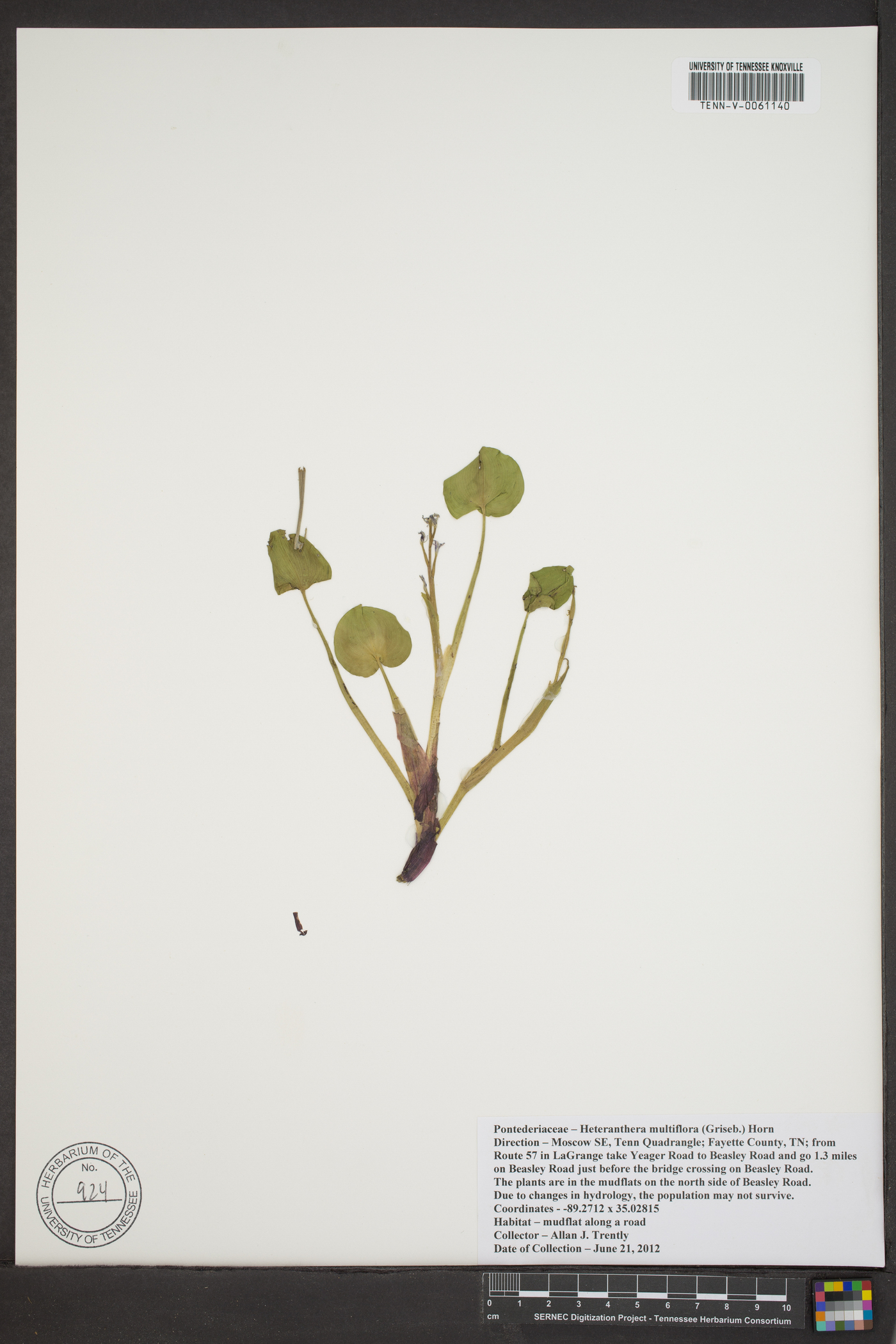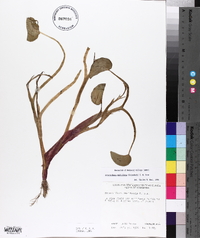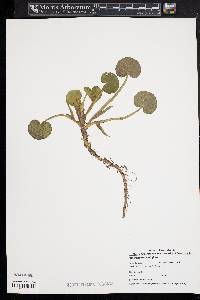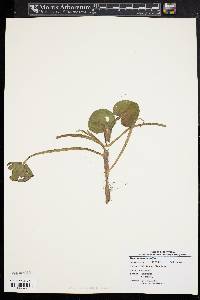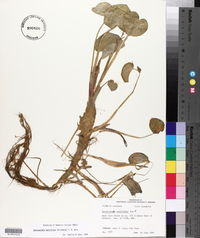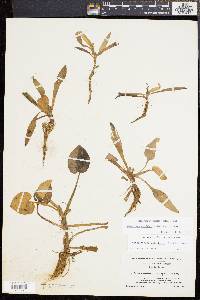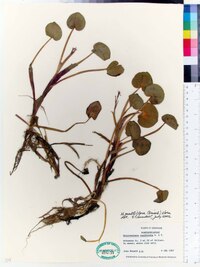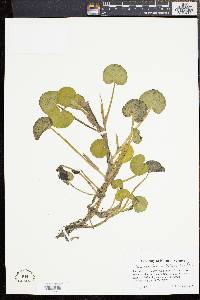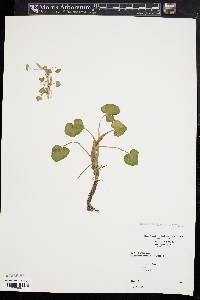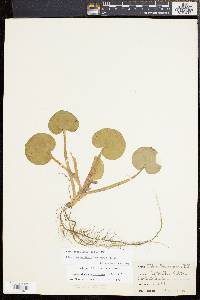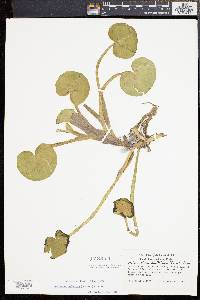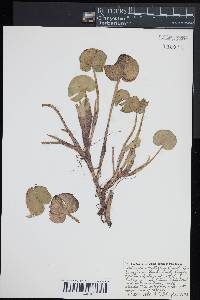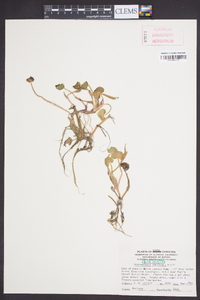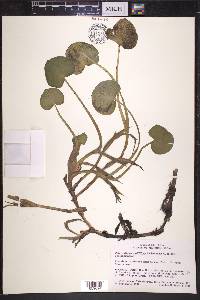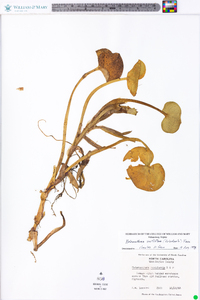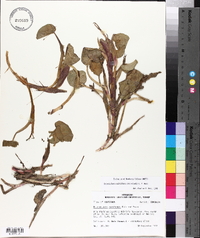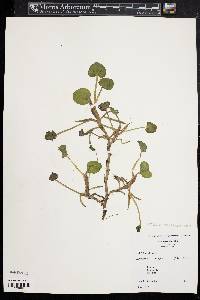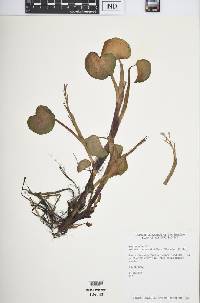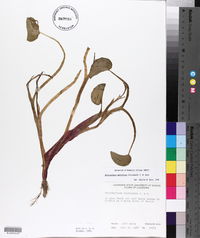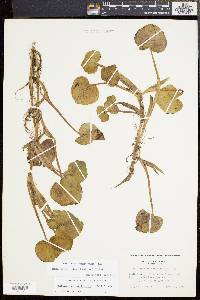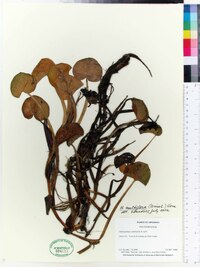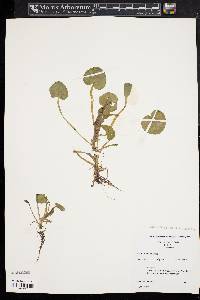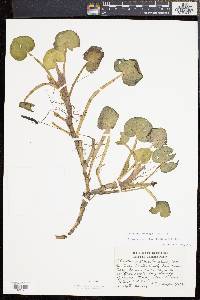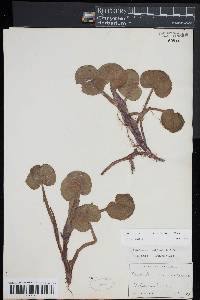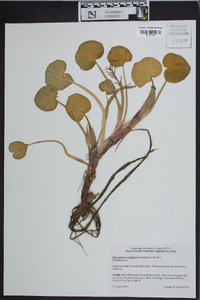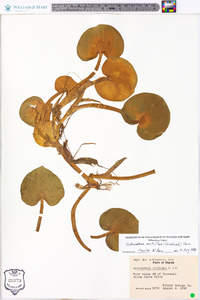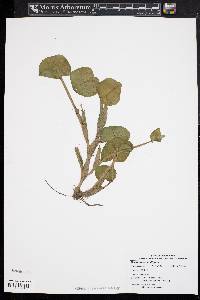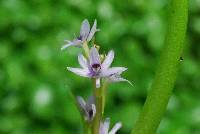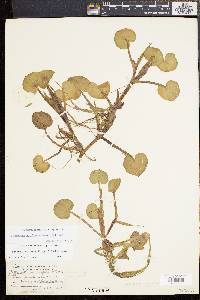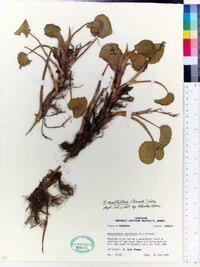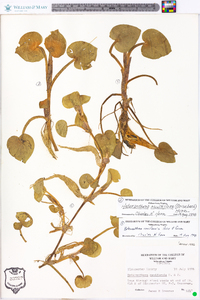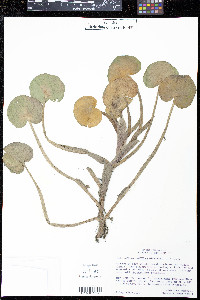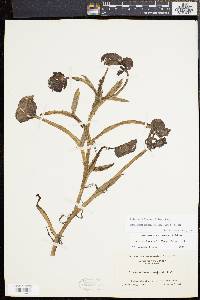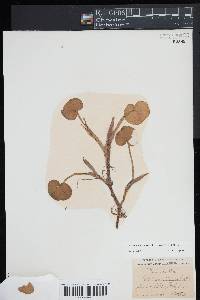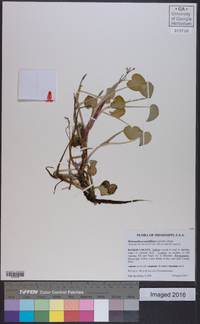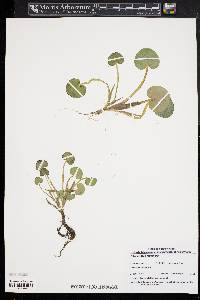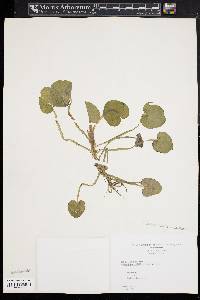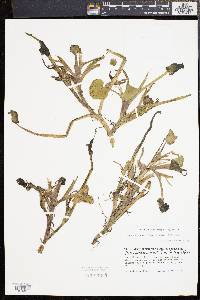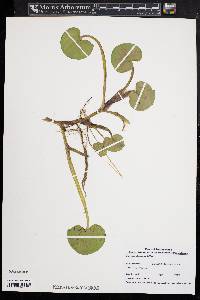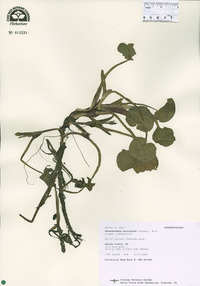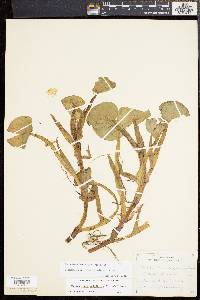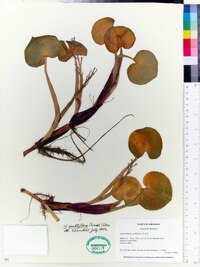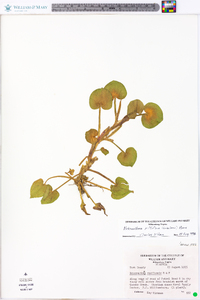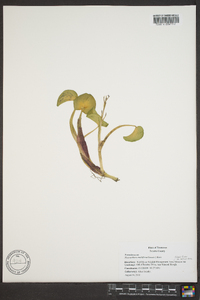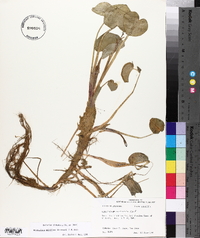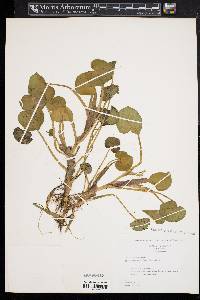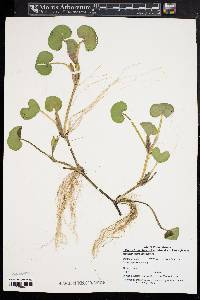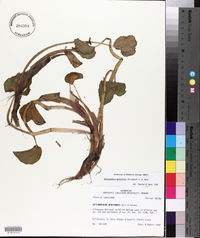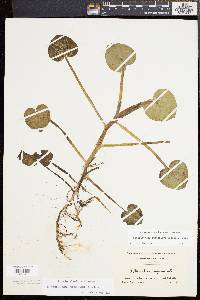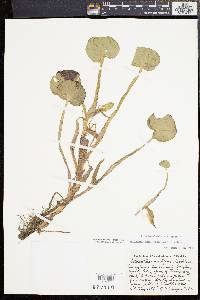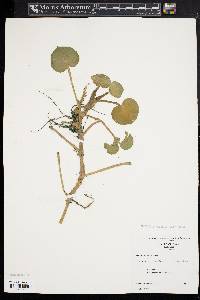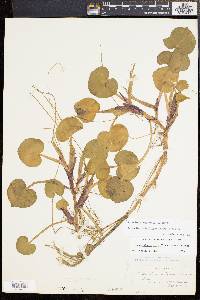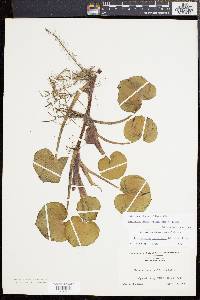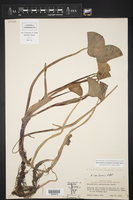Heteranthera multiflora
|
|
|
|
Family: Pontederiaceae
Bouquet Mud-Plantain, more...bouquet mudplantain
|
Plants annual. Vegetative stems submersed with elongate inter-nodes, or emersed and procumbent. Flowering stems 1-4 cm, distal internode less than 1 cm. Sessile leaves alternate; blade linear to oblanceolate, thin, 37-70 × 4-6 mm, margins entire. Petiolate leaves floating or emersed; stipule 3-5 cm; petiole 5-15 cm; blade cordate, 2-5 × 2-5 cm, length usually greater than width, apex obtuse. Inflorescences spicate, 3-16-flowered, elongating in 1-2 days, longer than spathes (except on cleistogamous inflorescences); spathes 2-7 cm, glabrous; peduncle 4-11 cm, glabrous when emersed. Flowers opening ca. 2 hours after dawn, wilting early afternoon; perianth mauve or white, salverform, tube 3-12 mm, limbs zygomorphic, lobes narrowly elliptic, 3.3-5.9 mm, distal central lobe dark purple in basal 1/3, 2 yellow spots within dark area; stamens unequal, lateral stamens 1.3-2.4 mm, filaments linear, densely pubescent with purple multicellular hairs toward apex; central stamen 2.6-4 mm, filament sparsely pubescent with multicellular hairs; style pubescent with multicellular hairs. Seeds 9-12-winged, 0.6-0.9 × 0.4-0.5 mm. 2n = 32. Flowering Jul--Nov. Roadside ditches, pond edges; 0--1800 m; Ark., Del., Ill., Iowa, Kans., La., Md., Miss., Mo., Nebr., N.J., N.C., Okla., Pa., Tenn., Tex., Va.; South America (Argentina, Brazil, Paraguay, Venezuela). This species has in the past been incorrectly identified as either Heteranthera reniformis (J. A. Steyermark 1963) or H. peduncularis (R. B. Kaul and C. N. Horn 1986). However, detailed study of development, floral morphology, and chromosome number revealed distinct differences (C. N. Horn 1985, 1988). Three distinct genetic forms of this species exist, two in the flora range. Populations along the Atlantic coast have white flowers and inflorescences with most of the flowers within the spathe. Populations in the Great Plains have blue flowers and inflorescences with most flowers typically beyond the spathe. These populations have not been, nor should they be, recognized at any taxonomic level.
Much like no. 2 [Heteranthera reniformis Ruiz & Pav.]; blades usually a little longer than wide; fls 3-16, all opening in one or 2 days, the spike elongating well out of the spathe; perianth pale purple or white, scarcely glandular-pubescent, the tube 3-12 mm, the central upper lobe with 2 yellow spots in the dark purple basal area; hairs of the filaments copious, purple; 2n=32. In shallow water or emersed on mud; c. U.S., from Nebr., Kans., and Okla. to Ill. and Miss.; disjunct on the coastal plain from N.J. to N.C., and in S. Amer. Gleason, Henry A. & Cronquist, Arthur J. 1991. Manual of vascular plants of northeastern United States and adjacent Canada. lxxv + 910 pp. ©The New York Botanical Garden. All rights reserved. Used by permission. |

